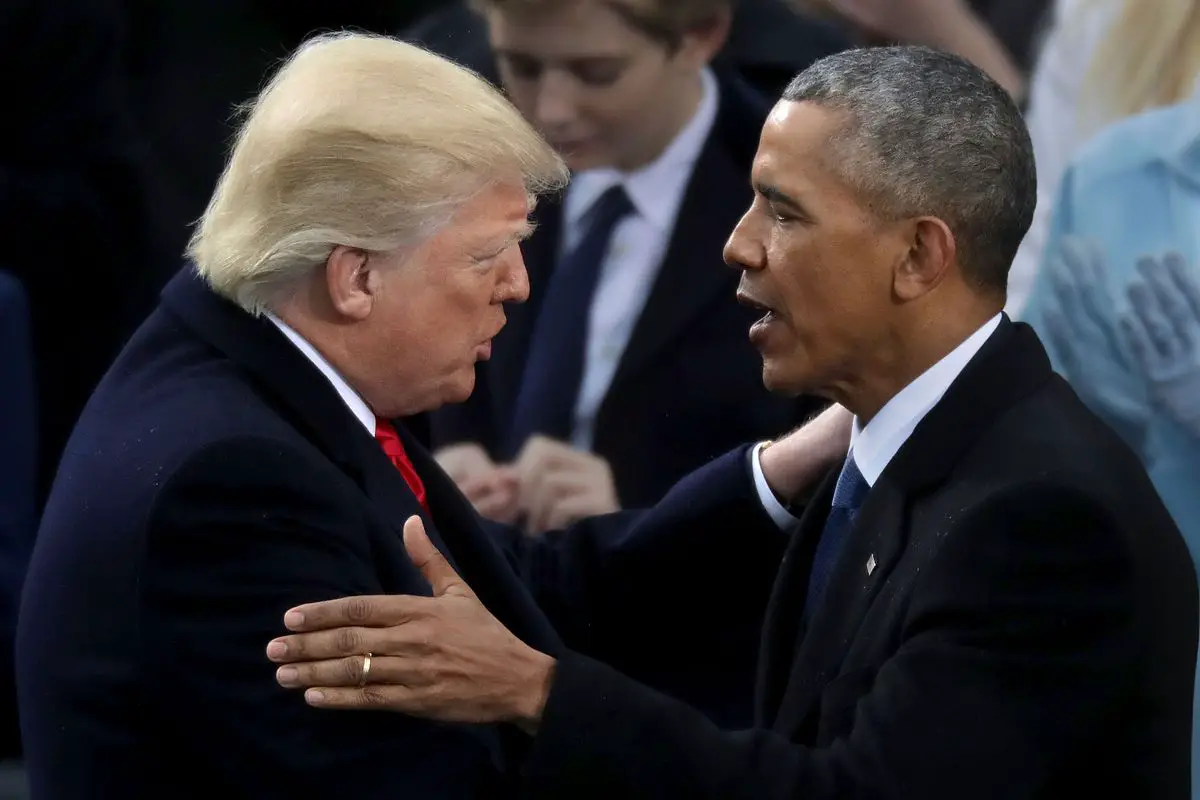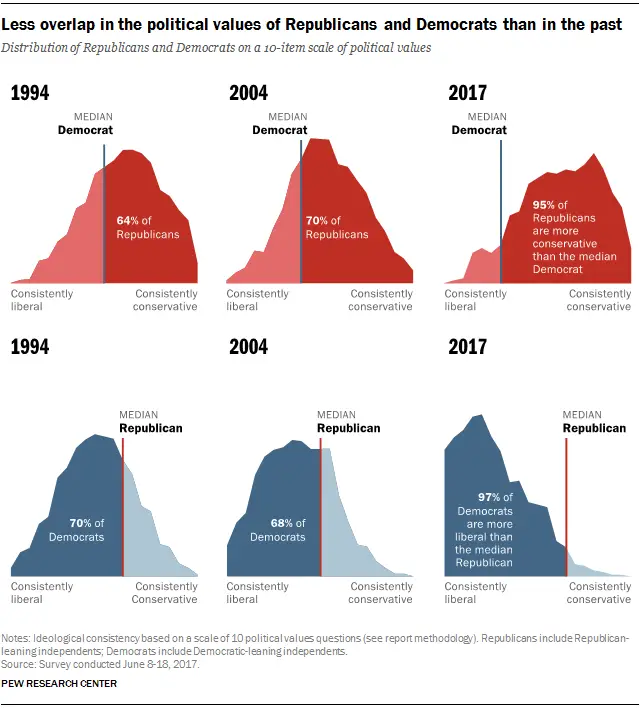Perhaps as a result of polarization which happened during the Bush and Obama years, capped off by Trump, America is more partisan on issues than we were in the 1990s. Even back to 2004, more ideas and issues were shared equally by Republicans and Democrats compared to today, when political tribalism runs rampant.
This isn’t mere speculation, there is actual data to back up the country’s mood in seeming less united, and more politically divided. The kicker in this data is that the trend didn’t start with Donald Trump, which is probably what some of you reading this may be thinking. The data comes from Pew Research, and gives us a greater picture of how political identities have shifted in the past couple decades, starting under the Clinton administration:
Overall, 32% of Americans now take a roughly equal number of conservative and liberal positions on a scale based on 10 questions asked together in seven surveys since 1994. As recently as 2015, 38% had this mix of values – and 49% did so in 1994 and 2004.
Reflecting growing partisan gaps across most of the individual questions in the scale – even those where both parties have shifted in the same direction – Republicans and Democrats are now further apart ideologically than at any point in more than two decades.
Here’s the graphical representation of the how the changes have occurred since 1994:
The shift seems to be happening at a fairly sustained pace, changing roughly eight to ten percentage points every decade since 1994. I have my hunch as to what happened in that time period, but here’s more data to chew on:
The median Republican is now more conservative than 97% of Democrats, and the median Democrat is more liberal than 95% of Republicans. By comparison, in 1994, there was substantially more overlap between the two partisan groups than there is today: Just 64% of Republicans were to the right of the median Democrat, while 70% of Democrats were to the left of the median Republican. Put differently, 23% of Republicans were more liberal than the median Democrat in 1994, while 17% of Democrats were more conservative than the median Republican. Today, those numbers are just 1% and 3%, respectively.
Partisanship is very high among voters, and it’s equally high in government as we see both parties fail to agree on much of anything time and time again. The level of compromise is very low, while the demands of ideological purity in pushing legislative ideas has dramatically increased.
So what happened since 1994 that sent us in this direction? For one thing, the media exploded with 24 hours news and the internet became widespread. This accelerated in the 2000s, almost at lightning speed. The news monopoly was broken and we were all given the privilege of retreating to partisan corners, whether that included Fox News or MSNBC – there was a corner for everyone. The 2004 Presidential election and the Iraq War became divisive, and that may have fueled this change since the Bush administration. It seems that under President Obama, the trend simply continued as the country took on issues like gay marriage and other divisive social issues.
As a result of the media explosion in the past twenty years, the most partisan hosts on each side receive the highest ratings. With this vast ratings, they call for lawmakers to never compromise on their views whether they’re liberal or conservative.
Donald Trump was acutely aware of this, and continues to use it to his advantage. People are less and less inclined to attack politicians they agree with, especially if they really agree with them. The same circumstances held for President Bush and President Obama, but neither of them were able to use it to their advantage as much as President Trump is right now.

